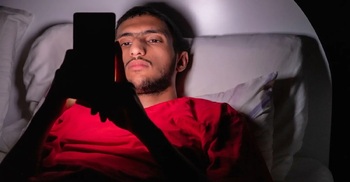Why procrastination can help fuel creativity

By Loizos Heracleous and David Robson, BBC
If the history of creativity teaches us anything, it is that great ideas often come when we’re least expecting them. Consider Wolfgang Amadeus Mozart, who described how new melodies would arrive while he was eating in a restaurant, walking after a meal or getting ready for sleep at night. “Those that please me, I retain, and even hum; at least, so others have told me,” he wrote. “It seems to me impossible to say whence they come to me and how they arrive; what is certain is that I cannot make them come when I wish.”
It’s not just Mozart who experienced this phenomenon; the French mathematician Poincare described how his breakthroughs occurred while travelling on the bus or walking by the seaside, while Agatha Christie reported that ideas for her crime stories often came while washing up or having a bath. “I don’t think necessity is the mother of invention,” she wrote in her autobiography. “Invention, in my opinion, arises directly from idleness, possibly also from laziness.”
Psychologists would seem to agree, with strong evidence that creative insights are much more likely to occur after a period of “incubation” – in which you focus on something entirely different from the job at hand, while your brain works away behind the scenes. This could include taking a walk, doing household chores or having a shower. Even our procrastination at work – such as watching funny YouTube videos – may be helpful for our problem solving, provided it is done in moderation.
Free thinking
There are many reasons why a period of incubation could lead to new and inventive insights. According to one of the leading theories, it depends on the power of the unconscious mind: when we leave our task, the brain continues to look for solutions below awareness, until a solution pops out.
Just as importantly, a period of incubation allows us to gain some psychological distance from our task. When you spend a long time focusing on one problem, you can become fixated on certain obvious solutions. A period of incubation should help you to widen your mental focus so that you can make connections and come back to the problem with a new perspective. Intriguingly, incubation may work best when your mind is distracted with an engaging but relatively easy task, so that it is given just enough room to wander freely.
In 2012, the psychologist Benjamin Baird and colleagues put this idea to the test with an ingenious experiment. The participants were first asked to tackle a classic test of creativity called the “Unusual Uses Task”. As the name suggests, the aim is to find as many surprising uses as possible for a common object, such as a brick or a coat hanger.
After a few minutes of brainstorming, it was time for a period of incubation. Some students were allowed to rest for 12 minutes. Others were given a fairly undemanding test, in which they were shown a string of digits and had to say, intermittently, whether the number was even or odd. That’s akin to doing a household chore like washing the dishes – it requires a bit of focus but still allows plenty of room for mind wandering.
A third group were given a harder task, in which they had to keep the numbers in working memory for a short while, before giving their answers. In terms of the mental effort that’s required, this activity is closer to the concentrated thinking we normally do at work; it doesn’t leave a lot of mental space for mind wandering.
After the 12-minute incubation period was over, all these participants then returned to the unusual uses test of creativity – and were scored on the originality of their solutions.
The benefits of performing the undemanding task during the incubation were striking, with these participants showing a 40% rise in the creativity of their ideas for the questions they had previously considered. Importantly, there were no benefits for the participants who did nothing at all during the incubation, or those whose minds were more fully occupied with the working memory challenge; neither of these groups performed any better than students who had continued with the brainstorming task without an incubation period.
It may seem surprising that the pure rest period had not provoked greater creativity, but Baird suspects that we need some distraction to provoke the optimum amount of mind wandering. If we have literally nothing to do, our thoughts can become too logically sequential, he says (as you may think through one particular subject in detail). For creativity, what you really need is looser, less focused thinking – and that seems to come with slight engagement in an undemanding task.
Productive procrastination
That’s good news for procrastinators, since many of our ‘time-wasting’ activities may offer the optimal level of distraction for greater creativity. The key is to use distraction in moderation, as evidenced by a brand-new study from American management professors Jihae Shin and Adam Grant.
The researchers first asked the participants to brainstorm the best ways a student entrepreneur could spend $10,000 to start a new company, which they then had to write up into a business proposal. To tempt procrastination, the participants were also given links to funny YouTube videos from Jimmy Kimmel Live, which they could easily access during the exercise. The researchers then compared how much they procrastinated with the originality of their proposals.
The resulting graph looked something like an upside-down ‘U’. The people who took a few short breaks to watch the clips tended to come up with far more creative ideas than both the low- and high-procrastinators – supporting the idea that moderate levels of distraction can unleash innovative thinking.
Testing the principle in a working environment, Grant and Shin questioned the employees, and their supervisors, of a South Korean design company about their work habits and creative performance. In line with the results of the laboratory experiment, the moderate procrastinators came up with more original ideas than their colleagues who remained tightly focused on the day’s tasks.
How to waste time creatively
Whether you are a budding novelist, an advertising creative, a strategist or a teacher hoping to come up with more original lesson plans, these results are worth bearing in mind. Facing an impending deadline, we may fear taking any time away from the task at hand. But this will be counter-productive, and there should be no guilt about spending a few moments of pleasant distraction, or leaving the task altogether as we allow a solution to bubble to the surface.
Leaders may also take note. Rather than admonishing employees for taking time out of the working day, they should actively encourage it.
There are many ways they might do this. For example, Stanford researchers Marily Oppezzo and Daniel Schwartz have found that walking boosts divergent thinking, providing fresh perspectives on whatever issues are occupying one’s mind. Interestingly the creativity-inducing effects of walking are similar whether it takes place indoors or outdoors. Leaders could therefore design workplace space that nudges employees to do more walking.
Apple’s new company headquarters, which opened in May 2017, may be the perfect example of this. Apple Park is circular and has a circumference of a mile and a diameter of 461m; it encompasses a 30-acre landscaped park where employees can wander when they are not walking to the café, the wellness centre or the theatre. As a bonus, this kind of layout promotes serendipitous encounters and conversations with colleagues, which could themselves act as a creative distraction, and which may also lead to exchange of complementary ideas and cross-fertilisation of research projects. Without issuing any explicit orders, the company is encouraging the adoption of behaviours that are known to increase creativity – a goal that was central to Steve Jobs’s vision of the park. And it seems to work: Apple is the most valuable company in the world at US$2 trillion and is regularly cited as the most innovative company in the world.
Not all companies can afford new office space, of course – and many employees are now working remotely. But managers can promote moderate procrastination in other ways, such as scheduling regular coffee breaks within meetings or even investing in nap pods, as seen in Google’s offices. (There is good evidence that short periods of sleep can also boost creativity when you are pondering a problem in much the same way as waking procrastination.) At the very least they should avoid chastising employees for the odd moment of distraction.
In the increasingly competitive workplace, we need innovative thinking more than ever before. But that will only be possible if we allow the conscious mind to find diversion and wander freely from time to time.
David Robson is the author of The Intelligence Trap: Revolutionise Your Thinking and Make Wiser Decisions.
Loizos Heracleous is a Professor of Strategy at Warwick Business School and an Associate Fellow at the University of Oxford. He is the author of Janus Strategy.







